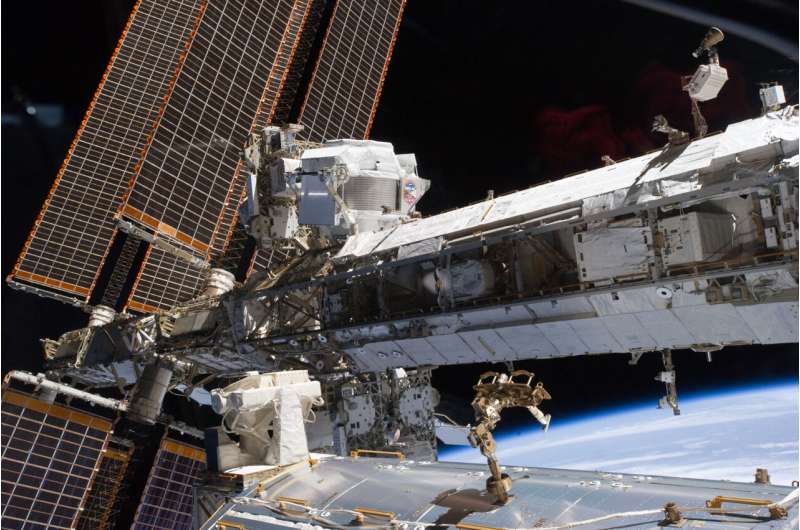This article has been reviewed according to Science X's editorial process and policies. Editors have highlighted the following attributes while ensuring the content's credibility:
fact-checked
peer-reviewed publication
trusted source
proofread
Cosmic count exceeds expectation: Alpha Magnetic Spectrometer on ISS reveals surplus of cosmic rays

Cosmic rays confound scientists once again. The latest analysis of data collected by the Alpha Magnetic Spectrometer (AMS) on board the International Space Station has revealed a surprising surplus of cosmic rays made of deuterons—atomic nuclei made up of a proton and a neutron.
The finding, described in a paper published in Physical Review Letters, adds to the growing list of unexpected results from the space-based detector, which was assembled at CERN and has detected more than 238 billion cosmic rays of particles of various kinds since it started taking data in 2011.
Cosmic-ray particles fall into two main classes: primary and secondary. Primary cosmic rays are formed in cosmic sources such as supernova explosions, whereas secondary cosmic rays are produced in interactions between primary cosmic rays and the interstellar medium.
In its latest study, the AMS collaboration investigated data from 21 million cosmic deuterons detected by AMS from May 2011 to April 2021. Examining how the number, or "flux," of deuterons varies with rigidity, that is, particle momentum over electrical charge, the AMS team found surprising features.
Deuterons are thought to form in the same way as helium-3 nuclei, in collisions between primary helium-4 nuclei and other nuclei in the interstellar medium. If that is indeed the case, the deuteron-to-helium-4 flux ratio should be similar to the helium-3-to-helium-4 flux ratio.
But this is not what AMS sees. By contrast, the AMS data shows that these ratios are notably different above a rigidity of 4.5 gigavolts (GV), with the deuteron-to-helium-4 ratio falling less steeply with rigidity than the helium-3-to-helium-4 ratio. In addition, and again defying expectations, above a rigidity of 13 GV the data shows that the deuteron flux is nearly identical to that of protons, which are primary cosmic rays.
To put it simply, AMS has found more deuterons than expected from collisions between primary helium-4 nuclei and the interstellar medium.
"Measurement of deuterons is quite difficult because of the large cosmic proton background," says AMS spokesperson Samuel Ting. "Our unexpected results continue to show how little we know about cosmic rays. With the coming upgrade of AMS to increase its acceptance by 300%, AMS will be able to measure all the charged cosmic rays to one percent accuracy and provide an experimental basis for the development of an accurate cosmic-ray theory."
More information: M. Aguilar et al, Properties of Cosmic Deuterons Measured by the Alpha Magnetic Spectrometer, Physical Review Letters (2024). DOI: 10.1103/PhysRevLett.132.261001
Journal information: Physical Review Letters
Provided by CERN





















